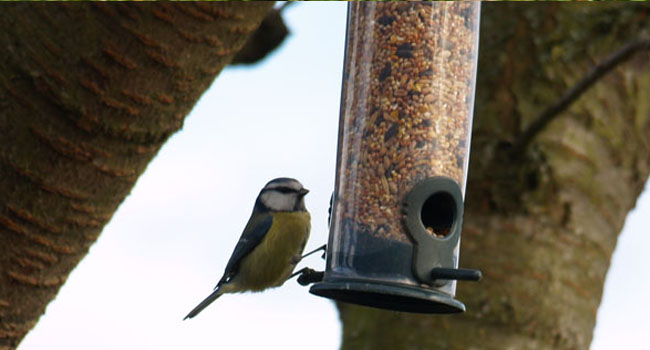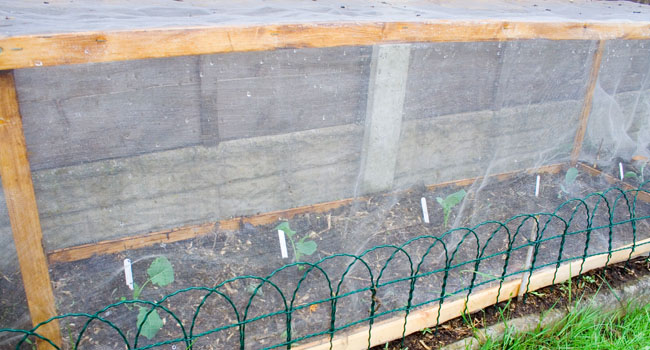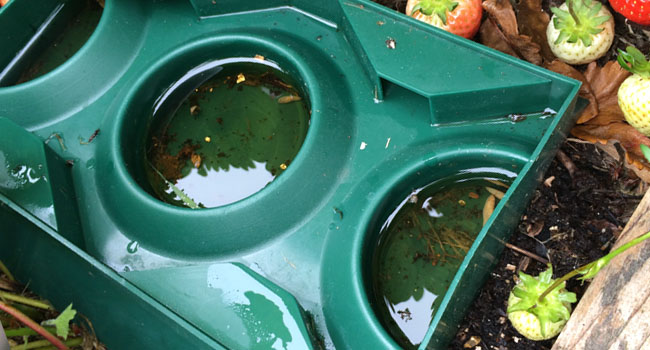The Organic Way to Control Pests in Your Vegetable Garden
The best form of pest control is to use nature's own checks and balances to keep pest numbers down. There are several ways in which you can ensure these checks and balances are in place, allowing you to sit back and enjoy the fruits of your labour instead of relying on potentially harmful pesticides to deal with any problems.
It's important to remember that there aren't armies of pests waiting to get hold of your prized vegetables the minute you've planted them. Bad weather and poor growing methods such as overcrowding are more likely to ruin your crop. However, the pests most likely to damage your vegetables are birds (which also eat many garden pests), slugs and snails.

Creating an ecosystem
However small your garden or vegetable plot, it should have a self-regulating ecosystem in place to control pests and keep your plants healthy. The simplest way to create this ecosystem is to plant a range of plants which attract natural predators that feed on pests. Ideally, these plants should provide food (in the form of nectar, fruit and pollen) and shelter for predators and sacrificial crops to maintain pest colonies. A sacrificial crop could be a clump of nettles. This will harbour aphids which will feed predators such as ladybirds and lacewings. If any aphids then attack your crops, the ladybirds and lacewings will be on standby to clear them up.
If you have room, a pond (even a very small pond) is useful for keeping pest numbers down. It will encourage frogs (which eat slugs) and bats (which eat mosquitoes and other flying insects). If the pond has a shallow area, it will also provide water for mammals such as hedgehogs (which eat slugs).

The following common predators keep pest numbers in check:
- Birds eat slugs, snails, grubs, wireworms, caterpillars and insects
- Hedgehogs eat slugs and snails, beetles and insects
- Frogs and Toads eat slugs, snails and various insects
- Ladybirds and lacewings eat aphids such as blackfly and whitefly
You can attract various predators to your plot with a few simple planting techniques. A few bird feeders will encourage more birds on to your plot. A nesting box or wild patch will encourage hedgehogs. Lacewings and ladybirds can be encouraged to visit by planting candytuft, sunflowers and marigolds.

Regular inspections
It is important to check your vegetables for pests on a regular basis. A small clump of aphids on your broad beans is nothing to worry about (a healthy plant will shrug off the pests as we might deal with a cold), but if it becomes an infestation, you need to remove it. Simply rub the aphids off the plants with your fingers, or blast them with a jet from your hose. If the infestation is only small, leave it there. Predators will soon hone in on the pests and lay their eggs. For example, lacewing and ladybird larvae can eat as many as 150 aphids per day and produce new generations to control your pests next year.

Barriers and traps
If you don't want to rely on nature exclusively, barriers can be used to prevent pests reaching your crop. Cloches can be used to protect tender crops, such as lettuces, from slugs and various forms of netting can be used to ward off birds, butterflies and aphids. For example you can protect your brassicas (such as cabbages and broccoli) with netting to prevent pigeons from eating the seedlings and butterflies from laying eggs on them. If you have room, a fruit cage will protect your fruit from hungry birds (which tend to attack your crop before you've even noticed it's ready). Fleece can be placed over carrots to prevent carrot root flies from laying eggs on the young roots and destroying the crop.

Earwigs can devastate seedlings and soft fruit or sweetcorn silks. If they do pose a problem in your garden, you could try filling a few plastic flowerpots with straw and balancing them upside down on sticks to attract the pests. The earwigs crawl up the poles and take shelter in the pots at night and you can empty them and dispose of the pests in the morning. Sticky bands placed on the trunks of trees can stop pests from reaching the fruit. Sticky boards and fly paper can be used in greenhouses to trap and kill all sort of flying insect pests. There are many ways to trap and kill slugs (and a host of different products on the market that promise to do just that). An easy way to trap and kill them is to sink a dish filled with beer into the soil. The slugs flock to it, get drunk on the beer and drown. Mice and moles can removed using humane traps. Birds can be warded off by scarecrows.
Summary
- When it comes to pests, prevention is better than cure
- Developing and maintaining a natural ecosystem encourages natural predators to keep pest numbers down
- Regularly checking your crops ensures that any nasty surprises are avoided
- It is sometimes necessary to use barriers or traps to combat pests
